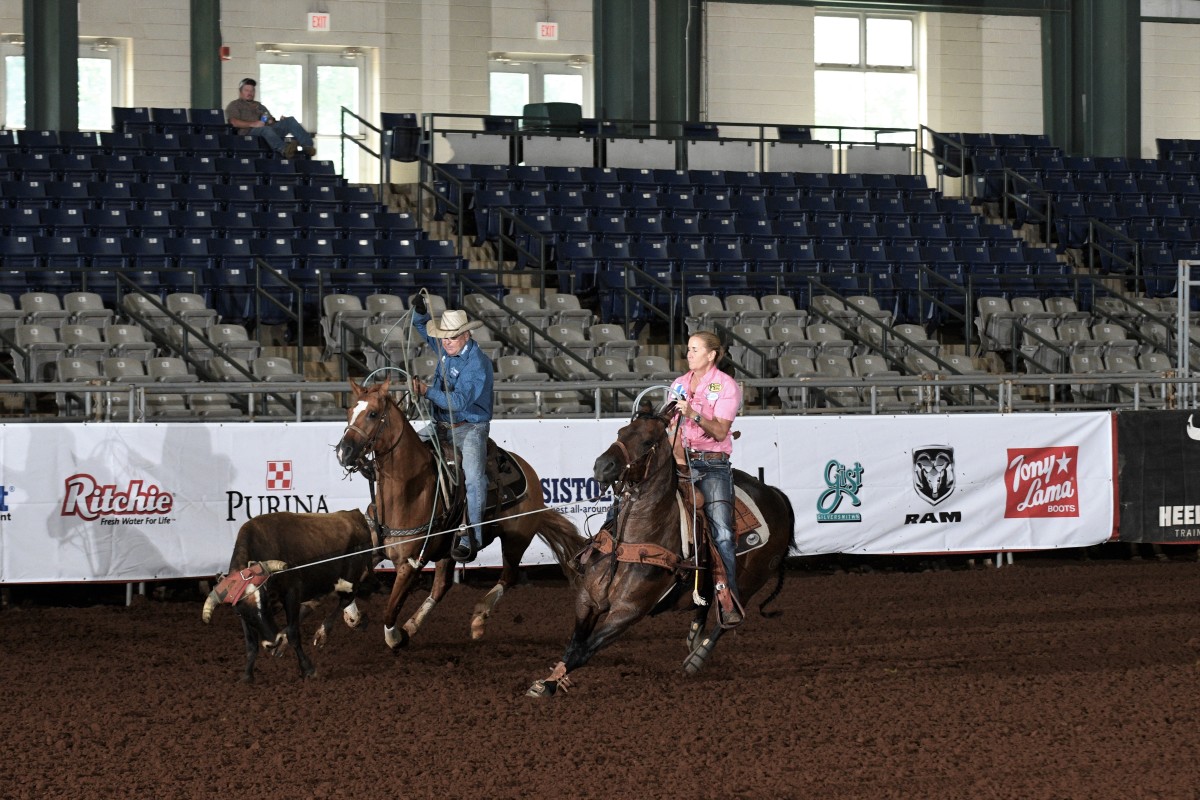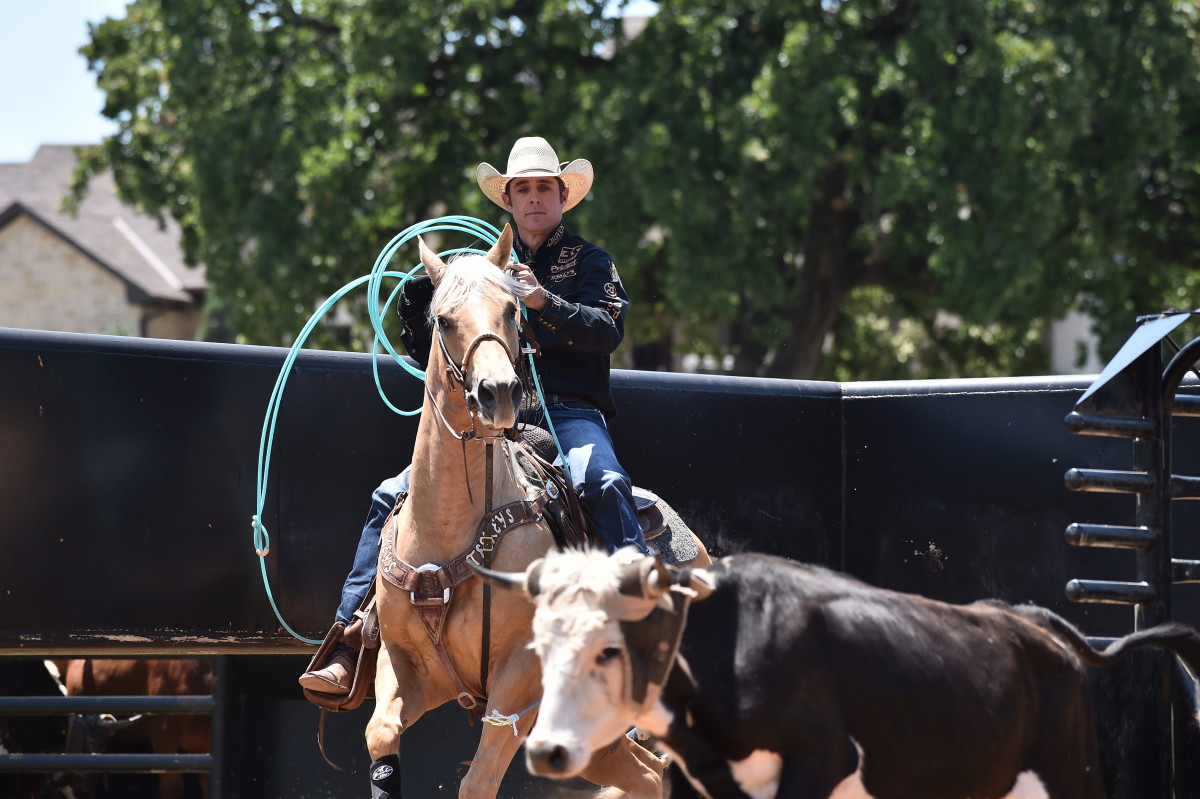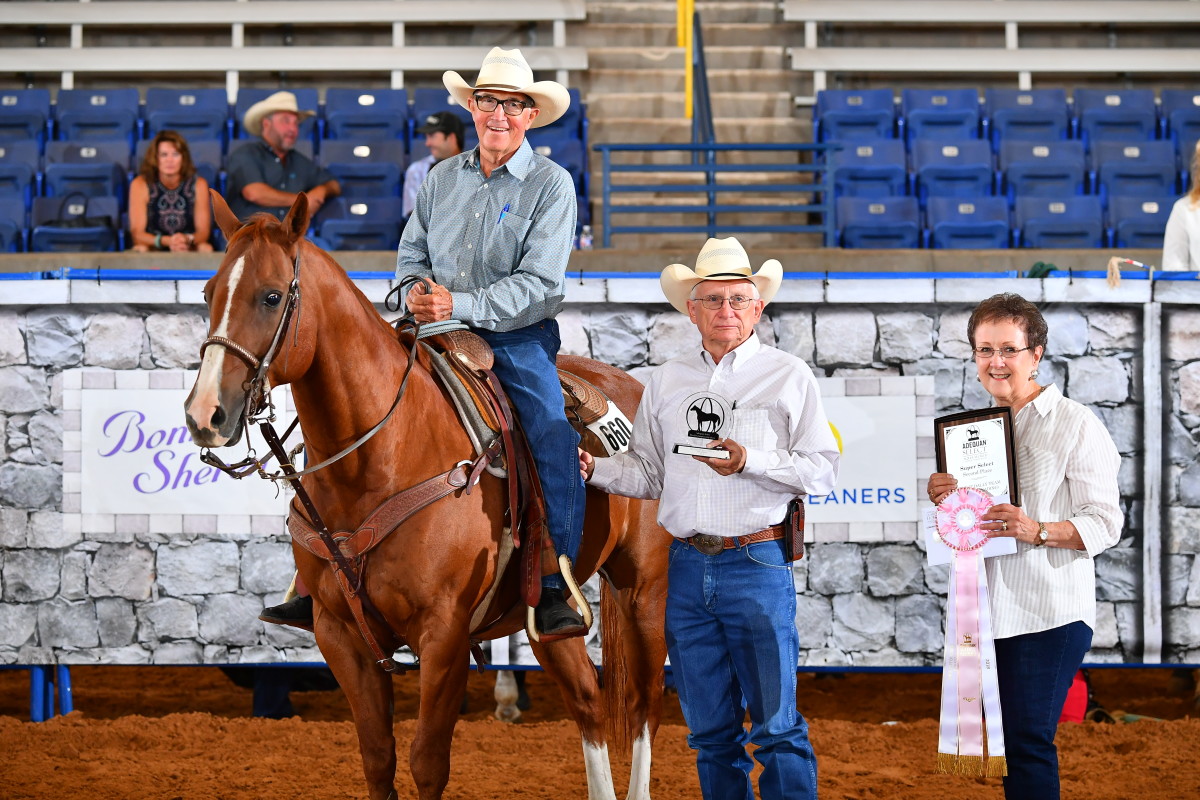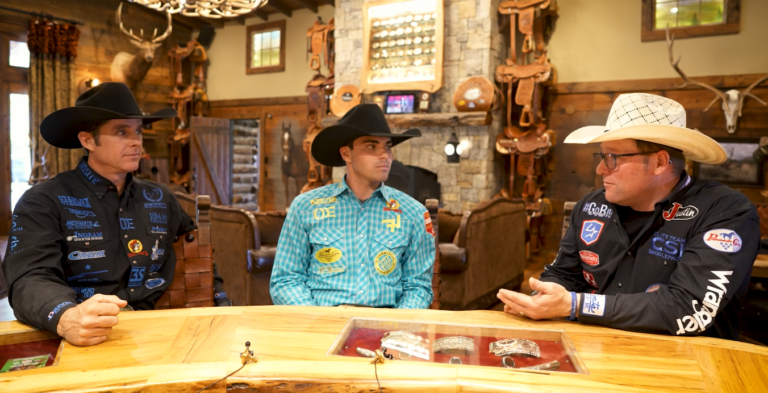Your worst horse-buying nightmare actually happened to Tish Luke.
The Florida rancher who hits all of America’s biggest team roping jackpots bought a once-in-a-lifetime 7-year-old gelding last year over the phone. She had a local vet send x-rays and flexion-test videos to her dad, who is a vet. The head horse passed and was sent to her Florida ranch.
“I won $7,500 on him the first week I hauled him,” she recalled. “The following week, he was still totally sound. Dad was here at the house on his annual visit to go through all my horses. He said, ‘There’s no need to check the new horse—he’s the soundest horse on your place.’ But we flexed him anyway and oh my gosh.”
The horse had an old injury; a torn hind suspensory ligament. Luke proceeded to spend upwards of $10,000 on shock wave therapy, PRP, stem cell injections, laser therapy and sent the horse to a rehab facility—only to have the staff call tearfully to report that his good suspensory in that leg had finally given out. He had to be euthanized.
“The moral of the story is that, if you’re getting x-rays, spend the money for ultrasounds, too,” said Luke.
The importance of pre-purchase exams is proportionate to the rising cost of head and heel horses. Luke doesn’t even bother with a vet check, however, if she’s there in person and the horse fails her own personal jogging, flexion, or hoof-testing trials. The idea to video a pre-purchase exam to send to your own vet for a second opinion is a great one. In Luke’s tragic story, she figures maybe the local tech didn’t flex the affected hind limb long enough to induce the lameness. Anyway, one thing is certain: “Old soft-tissue injuries in suspensory ligaments or tendons darn sure will not show up on an x-ray,” said Doug Funk, DVM, whose son, Matt, is a former NFR header.
Dr. Funk, who spends his winters heeling steers in Arizona, recommends getting a full set of x-rays and thorough lameness exam on an expensive prospect. You might also ask for a toxicology report to detect drugs in the system, he said, and the pre-purchase should include hoof-testing, flexion tests and ultrasounds as needed.
It’s not cheap. A full set of radiographs runs about a thousand bucks. Luke said in the Southeast, a thorough vet check costs thousands – plural. But if you’re a guy like two-time world champion heeler Patrick Smith or four-time reserve world champion header Kaleb Driggers, you want to know what you’re getting into, both competition-wise and for resale value.
Driggers has likely sold more rope horses to the top 15 than anybody in a generation. Still, he cautions people that a pre-purchase exam is never “pass/fail” and he doesn’t always feel the need for one.
“Sometimes if I ride a horse that feels a little off or isn’t perfectly smooth, I’ll get a vet check, but if everything seems in order and he feels good to me, I’m good,” said Driggers, who endorses Dixon Flowers Rope Horses. “Vets are human, no different than us, and they cannot predict how long a horse will last you.”

Andersen / C Bar C Photography
Caveats
It’s true. Both Dr. Funk and Steven Allday, DVM, confirm the fact that no veterinarian has a crystal ball. They’re only getting a glimpse at one point in time. Dr. Funk adds that a vet check is in no way a warranty.
“Horses are living creatures and change constantly,” he said. “What I see on a horse today or do not see on one today because it was masked—that’s all we can tell you about.”
It’s also true that a horse could severely fail a vet check and last you for years, while another with sparkling clean x-rays could be chronically lame. So how should you approach pre-purchase exam results?
Dr. Terry Swanson, who has been the world-class performance-horse vet at Littleton (Colorado) Equine Medical Center for the past half-century, said the biggest factor is your own level of risk aversion as the buyer. If the horse has exceptional ability, depending on how hard he or she will be used, will it be financially feasible for you to take the risk that a precursor doesn’t turn into a problem?
“It’s very much based on each individual horse,” said Dr. Swanson, a Wyoming native who’s been in practice 54 years and has been a team roper even longer. “The veterinarian’s role is to provide all the information to the buyer about what the risks are.”
Dr. Swanson, a past president of the American Association of Equine Practitioners, faces the same issues investing in his own head horses, which he both buys and raises with his wife. He won a reserve championship heading on Salado Suite behind another veteran team roper, Butch Morgan, at the 2018 AQHA Select World Championship Show.
As for Driggers, he tends to have his sale horses around for several months, so that gives him a good idea of their soundness. He tells buyers his opinion on that prior to them trying a horse.
“People have gotten so caught up in vet checks on a pass/fail level,” he said, “but any performance horse is going to have some issues, no different than any active human.”
Prognosis vs pass/fail
Instead of a simple “yes” or “no” from a vet on a horse he’s buying, Driggers counts on Outlaw Equine of Decatur, Texas, to brief him on the horse’s particular issues and what would be required to keep the horse comfortably competing. That’s the same program Smith follows. He simply wants a horse to be able to do its job comfortably, so a deal-breaker is any issue that is unmanageable. He’ll definitely watch for anything that could take a horse “out of commission,” such as ringbone, bone spurs or other major problems.
“But even if they have those, I’ll take a horse to my vet and ask him how much time he thinks we can get out of the horse,” said Smith. “Everything we do in life is a gamble and I’m willing, if the horse is good enough.”
It never hurts, too, to ask about the horse’s history or contact previous owners. ProRodeo Hall-of-Famer Jimmie Cooper—who’s spent decades investing in horses for his family of five, including NFR-qualifying twins Jake and Jim Ross—always feels better if he’s seen a horse around or knows the previous owner’s program. But he still gets vet checks, considering a good horse today costs $50,000 to $250,000. Ultimately, he said it’s about deciding whether or not you want to take a chance on a horse.
“You can buy a horse with perfect legs and something will happen and six months later he’ll be dead,” Cooper said. “I’ve had all kinds of scenarios happen. You basically say your prayers and talk to your vet and make your judgment.”
Texas header Russ Cook, who split $53,500 with Ricky Oliver in the #9.5 at Wrangler BFI Week last June, also likes to watch a prospective head horse for a year or two. He’s fairly picky about any irregularities in a pre-purchase exam, both because he has other horses to ride and because he simply doesn’t like maintenance – plus horses with issues are harder to resell, since he tries to be honest with people.

Jamie Arviso Photo
Deal-breakers
Open header Beverly Robbins does her homework on any prospect, including at what age the horse was started and how it’s bred. In her opinion, cutting and reining prospects have been turned around too many times by the age of 3 to avoid hock problems. Maintenance requirements are fine with a 12-year-old horse, she said, but she requires clean legs and feet on a young head horse. Age matters to Cook, as well, so he only buys horses with papers. Bloodlines, too, play into Robbins’ decisions.
“I’ve just had so much luck with foundation breeding like Doc Bar in my horses, because they have more bone and hold up better,” she said. “I love Smart Little Lena, but their bones are just so tiny now and their feet so small.”
Dr. Funk said his biggest deal-breaker is any type of progressive or unmanageable osteo-arthritis. Then he cites hock problems, early low ringbone, and some ankle issues as possible deal-breakers. It depends, too, on how many years you want out of a particular horse.
Dr. Allday, who returned to team roping after focusing for decades on racehorse health, also routinely sees horses with horrible spurs or degeneration on x-rays never take a lame step, while a horse with perfect radiographs is limping around.
“Strange as it sounds, the beauty of a horse is in the eye of the beholder,” he said. “I tried a rope horse with a real obvious problem in a foot, but I knew I could handle it, so I bought him. He’s as good a horse as I’ve ever thrown a leg over. In the past eight years, I’ve won $160,000 on him. It just took some anti-inflammatories and the right shoeing and one set of injections.”
He did say he’d turn down a horse with clubby or small feet, because they’re hard to keep sound.
“If the foot is well-balanced and wears a shoe well and has a good-looking wall with good angles, then you could radiograph it until you’re blue in the face and it won’t mean much,” he said. “It’s all about interpretation.”
Luke, too, said navicular changes are her deal-breaker, as well as thin soles on front feet or any kind of heel pain. In doing her own flexion test of a lower front limb, Luke is aware that she won’t know if a bad outcome is due to a problem in the ankle, knee, or coffin joint, but she doesn’t care which joint makes a horse limp—she’s out.
If you really love a horse with a questionable outcome, you could offer to re-do the pre-purchase exam in 30 days at the seller’s expense. Because in team roping, you want the best horse you can possibly get, said Dr. Allday, the founder and chief executive of the LubriSynHA family of equine supplements.
“I worked on racetracks all over the country, from Miami to Louisville to New York and Chicago, so when I picked up team roping again at the age of 50, I didn’t have the same physical attributes I did in college,” he explained. “But I could make up the difference by riding a rocket ship. When I find a real freak that’s athletic and fast and rates and is broke? I think, ‘I’ve got to buy that horse.’”

Courtesy AQHA Journal










